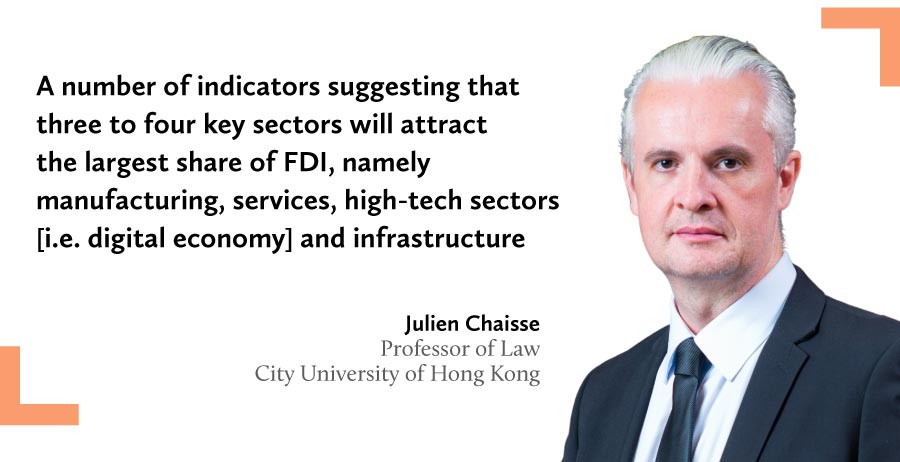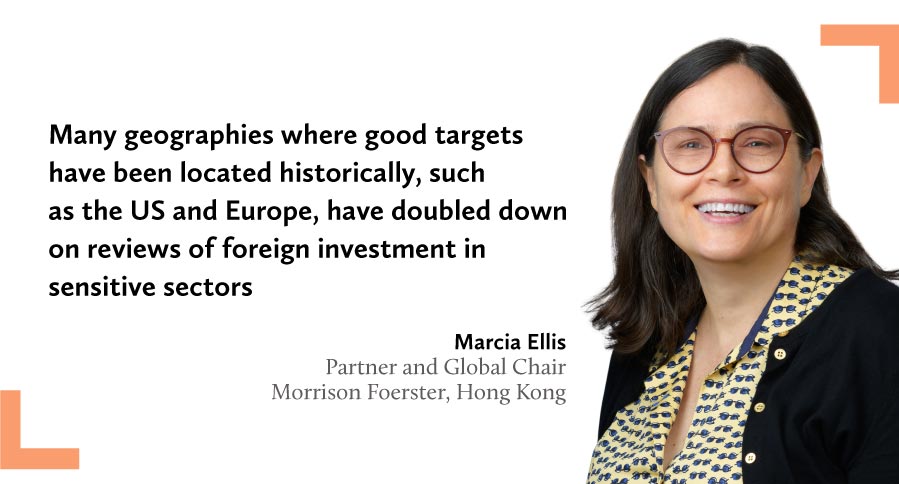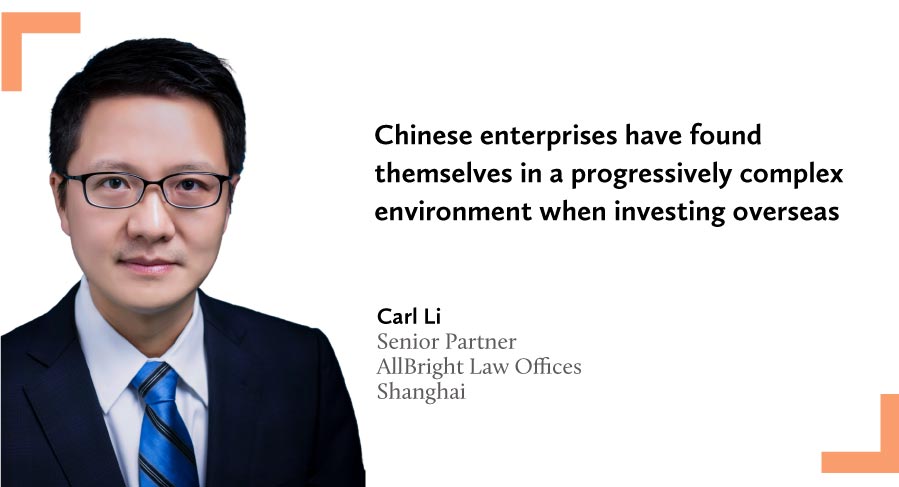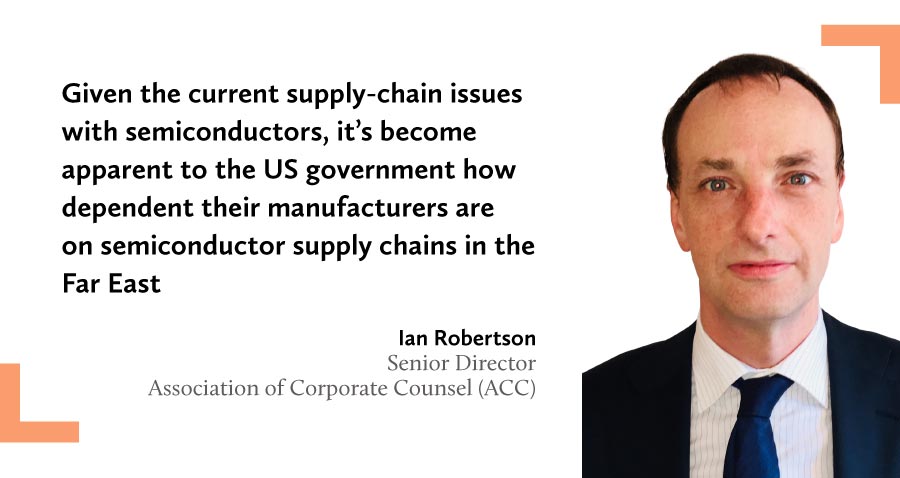As the world acknowledges the real threat of global recession, where and how a Company should invest has never been more challenging. General counsel hold the keys To unlocking opportunity, and more than ever are relied on for sound advice. There are many positives, but market knowledge is paramount in an insecure world. Putro Harnowo sheds light by turning to key trends
Following a significant rebound last year with booming M&A markets and rapid growth in international project finance, the UN Conference on Trade and Development’s (UNCTAD) World Investment Report 2022 highlighted the war in Ukraine and the lingering effects of the pandemic have caused a triple crisis regarding food, fuel and finance in many countries.
The June report expected global foreign direct investment (FDI) flows in 2022 to move in a downward trajectory or remain flat at best, while signalling an increasing trend in FDI screening among developed countries. Countries that conduct such screening account for 63% of global FDI inflows.
The UNCTAD report notes the recovery brought growth in all regions last year, mostly caused by M&A transactions and high levels of retained earnings of multinational enterprises. In 2021, multinational companies from developed economies more than doubled their investment abroad to USD1.3 trillion, from USD408 billion in the previous year.
For in-house counsel at companies either investing or considering investment abroad, there are trends to be both welcomed and wary of. Evolutions of regulation to accompany policies surrounding sovereignty and security need constant vigilance from legal teams, and trends outbound and inbound reflect these vigilant times.
“Companies recognise they must make their supply chains resilient and to do so will require investment abroad,” says Steven Okun, founder and CEO of APAC Advisors and chair of AmChams of the Asia-Pacific in Singapore.
Okun adds that trade agreements such as the Comprehensive and Progressive Agreement for Trans-Pacific Partnership (CPTPP) and the Regional Comprehensive Economic Partnership (RCEP) provide great flexibility in the region to diversify their supply chains – of which companies are just starting to take advantage.
The US-led, 14-nation Indo-Pacific Economic Framework (IPEF) is committed to making supply chains more resilient, robust and well-integrated, which could include creating an information sharing and crisis response mechanism, strengthening supply chain logistics and transparency, and investing in training and development to ensure enough skilled workers.
“These actions, if taken, will further increase the appetite for Asian companies to invest abroad,” says Okun.
Junko Suetomi, a partner at Baker McKenzie’s Tokyo office says that “overall in Asia, life sciences, artificial intelligence [AI], the IT industry, semiconductor industry as well as energy sectors are the industries in which I anticipate seeing an increase in investment”.
INDIA STRIKES
Rapid growth in investment from China accompanied by a deteriorating political relationship in the past few years has necessitated the formalisation of the national security screening process in India. Press Note 3 was issued by the Indian government in 2020 to restrict FDI from neighbouring countries.
“Earlier foreign investments were scrutinised from a national security perspective on a selective basis,” notes Santosh Pai, a partner at Link Legal in New Delhi. “Direct or indirect investment in Indian companies from countries sharing a land border with India will require approval under Press Note 3.”
Following the ban placed on more than 200 internet applications from China, it is likely that Chinese investment in the digital economy will attract more scrutiny. However, Pai believes that investment from private companies in China in the manufacturing sector, especially with significant employment generation potential, are unlikely to be impacted. Joint ventures with Indian companies accompanied by a transfer of essential technical know-how will also be welcome.
While Press Note 3 covers investment in India where the beneficial owner is situated in, or is a citizen of, a bordering country, Mohit Gogia, a partner at S&R Associates in New Delhi, notes that it does not elaborate on the manner in which the beneficial ownership test is to be calculated and applied, and no clarity has been issued to date.

As India tries to position itself as an alternative manufacturing destination, and with the hopeful easing of certain political situations, Gogia says that India will at some stage need to reconsider Press Note 3 and its implications, or at least clarify certain rules that would ease certain restrictions.
With relatively strong domestic supplies and consumption coupled with neutral relations with Russia, India has been shielded from some aspects of global supply disruption. “India and Indian companies have also tried to position themselves as an alternative to supply disruptions from China, and invite global companies to partner and set up manufacturing in India rather than look outward for acquisitions,” says Gogia.
“At the same time, big Indian conglomerates have always been interested in good overseas assets, but the impact of interest rates on global debt markets has impacted some of these transactions.”
In terms of regulatory development, one of the most significant changes, according to Gogia, is the new overseas investment rules for cross-border transactions that have liberalised Indian companies from investing in overseas companies with underlying Indian operations. Previously, no Indian company was allowed to make a financial commitment to a foreign entity that has invested in India. The rule has now been liberalised that such commitment does not require approval from the Reserve Bank of India if the investee involves less than two levels of subsidiaries.
“While the Reserve Bank of India [RBI] has earlier permitted structures where the Indian entity invested in a foreign entity, which in turn had investments in India on a case-by-case approval basis, this relaxation will provide ease of doing business for multinational companies and conglomerates with Indian operations,” says Gogia. “Indian companies may also now be encouraged to consider holding structures abroad on account of the ease of listing abroad and becoming more accessible to other foreign investors.”
Pai, of Link Legal, agrees that the liberalisation of the overseas investment rules will certainly encourage outbound investment. Indian companies can now choose to invest abroad using a variety of equity and debt instruments.
“Obtaining financing for such investments has also become easier,” says Pai. “More sophisticated structures involving deferred payment of consideration are also possible.”
In general, Pai notes FDI in India has been registering a steady growth despite the pandemic. The production link incentives scheme covers 14 sectors that have been prioritised, including manufacturing of semiconductors and related components to ensure self-sufficiency in the electronics sector. A larger proportion of foreign investors will employ a dual-pronged strategy of manufacturing for the domestic market as well as for exports.
As India always seeks benefits from investments by multinationals looking to diversify and build resilience into their global supply chains, Pai advises general counsel aiming at the Indian market to pay attention to India’s new fast-track negotiations on bilateral free-trade agreements (FTAs), which have resulted in FTAs with the UAE and Australia.
“Several more FTAs with countries such as the UK, Canada and the EU are expected,” says Pai. “Such FTAs will also boost the appetite among Indian companies for outbound investments.”
SOUTHEAST ENGINE
Southeast Asia is hailed as the engine of growth for FDI with inflows of up to 44% in 2021 compared to the previous year, according to the UNCTAD report. In general, FDI inflows to developing Asia increased by 19% to reach a new high of USD619 billion, driven mostly by East and Southeast Asia. The rise of Southeast Asia was underpinned by strong investment in manufacturing, the digital economy and infrastructure.
As Asian multinationals represent a good amount of outward FDI and will continue to access more profitable markets in North America, the EU, and within Asia, the City University of Hong Kong’s professor of law, Julien Chaisse, observes the share of investment coming from developing Asia keeps increasing and will further increase in the next year.

Morrison Foerster Singapore-based partner, Ang Lip Kian, also sees keen interest in acquisition and investment transactions in the technology, payments and data centre sectors in Southeast Asia. However, he notes that deals are taking longer to complete as acquirers and investors grow more cautious due to tightening liquidity and broader macro conditions.
As Southeast Asia is a heterogeneous market, where each jurisdiction has its own set of political, market and legal characteristics, all of which are constantly and rapidly evolving, Ang suggests an acquirer or investor to have access to legal advisers with strong local expertise and awareness of on-the-ground developments in the relevant markets.
During the current market uncertainty, Ang expects acquirers and investors to become more selective and evaluate targets more carefully to safeguard their transactions. For example, the assumptions in a target’s business plan and financial models will likely become more conservative, and the target may be asked more questions around its cash runway and how prepared it is for more adverse market scenarios.
CHINA’S STRETCH
Following a strong year for deals in 2021, China has experienced a modest slowdown in inbound and outbound total transaction value this year. According to data from China’s Ministry of Commerce (MOFCOM), outbound direct investment grew 9% and reached USD145.2 billion in 2021, mainly aimed at the Belt and Road Initiative (BRI) and Asean countries. Meanwhile, investment into the US dropped 30% in 2021 from the previous year, reaching only USD6 billion.
Carl Li, a senior partner at AllBright Law Offices in Shanghai, says the covid-19 situation is restricting travel and the political tensions are making it very difficult to conduct large-sized transactions in major developed markets.
“Chinese enterprises have found themselves in a progressively complex environment when investing overseas,” says Li. “Regional geopolitical tension continues to bring challenges to global economic momentum.”
Li argues that the pandemic resurgence in China has also had an effect on economic growth and the profitability of enterprises. As a result, Chinese enterprises may lean towards caution when investing abroad in the short term. “Nonetheless, overseas markets that have transformational potential are still attractive to Chinese enterprises, such as in the new energy automotive sector,” he says.
In terms of regulation, Li observes that China’s outbound investment policies haven’t changed dramatically in the past 12 months, and the focus continues to be on encouraging companies to do the right outbound transactions in preferred sectors such as healthcare, technology, advanced manufacturing, energy and resources. On the inbound side, stronger GDP growth and the removal of certain investment restrictions have helped sustain and boost FDI.
“To boost FDI amid the crisis, the government of China has revised its negative list, liberalising several more industries for investment, and removing restrictions in others,” says Li. “In addition, the recently released Five-Year Plan and long-term vision for 2035 indicate the government’s intention to ease more restrictions in the near future to boost FDI to pre-pandemic levels.” Following an easing of regulations as China softens its attitude towards big tech companies, Li anticipates that technology or software and tech-enabled services will continue to lead the way in deal volume.
“Investment and M&A activities related to generic drugs, green energy and data assets are likely to boom, while M&A activity in other sections is likely to slow down or even decrease, especially in highly regulated sectors such as education,” says Li.

“Looking abroad, geopolitical tensions and the steady rise of national security review regimes around the world have continued to put a damper on outbound activity,” says Ellis. “Many geographies where good targets have been located historically, such as the US and Europe, have doubled down on reviews of foreign investment in sensitive sectors.
AMERICAN CHARM
While US companies see foreign investors as alternative sources of funding with better economic terms, Carl Valenstein, a partner at Morgan Lewis & Bockius in Boston, sees certain foreign investors, particularly from China, find that these investments are useful to build their own domestic market while acquiring technology, products and talent abroad.

“Whether you’re able to participate in the US market will depend on your reputation, whether you are subject to sanctions and whether you have a positive track record with the US federal agencies,” says Valenstein. “What we’re seeing now under the Biden administration is increased use of federal assistance as a means of ensuring domestic production and supply.”
A recent example is the Creating Helpful Incentives to Produce Semiconductors (CHIPS) and Science Act, 2022, which offers almost USD53 billion in grants for the US semiconductor industry and up to 25% in investment tax credits for capital expenses for semiconductor manufacturing and related equipment, with some caveats. Any semiconductor company that receives federal financial assistance is required to notify the Department of Commerce and seek clearance of any significant transactions involving the material expansion of semiconductor manufacturing capacity in China, and certain other countries of concern.
Nonetheless, Ian Robertson, senior director of the Association of Corporate Counsel (ACC) for East Asia in Hong Kong, observes this move has attracted Asian semiconductor companies to invest in the US, signalling global demand for the next couple of years. “Given the current supply-chain issues with semiconductors, it’s become apparent to the US government how dependent their manufacturers are on semiconductor supply chains in the Far East,” says Robertson. “It’s not going too far to say that congress sees this as a national security issue for the US, as something like 75% of world semiconductor production comes from East Asia.”
South Korean leading semiconductor companies Samsung and SK Hynix are already re-evaluating their existing facilities in China as the act restricts companies receiving US federal funds from expanding or upgrading their advanced facilities in China for 10 years.
For general counsel aiming at the US market, Robertson highlights antitrust as a key area where investors should be particularly careful. Transactions with a value of USD101 million or less are not subject to merger controls under the Hart–Scott–Rodino Antitrust Improvements Act, but could still be subject to non-competition merger control laws.
“Recently the Federal Trade Commission and the Department of Justice have continued an aggressive enforcement approach against M&A,” says Robertson. “The agencies have demonstrated their willingness to challenge transactions outright – including vertical mergers – rather than entering into consent agreements with merging parties,” he says.
“Both agencies’ personnel have highlighted in recent remarks that recent policy changes at these agencies are aimed at creating uncertainty, heightening risk and raising the transaction costs of doing deals to slow the pace of M&A activity.”
Jiang Zhaokang, managing partner at a global supply chain and trade legal service GSC Potomac in Washington, says trade and FDI are still on the rise between Asia and the US, even during the pandemic and geopolitical tensions.
Although Japan is the major source of Asian investment coming to the US, followed by South Korea and China, Jiang says that such inflow is by no means remarkable. “Around 70% of FDI into the US is from Europe, mainly the Netherlands, UK, Germany, Luxembourg, Switzerland, France and Ireland,” says Jiang. “Therefore, Asia has significant room for investment in the US to grow.”
With the lessons learned during the pandemic, Jiang believes more Asian businesses will optimise their supply chain and find manufacturing facilities closer to their consumers, with fewer logistics costs and more safe stock inventory, especially for critical industry products.
“However, global stagflation and the economic slowdown will reduce economic activities and FDI,” he says. “Global government debt has reached around 300% of GDP, and will force governments to raise taxes, which will negatively impact FDI.”
NATIONAL INSECURITY
To “strengthen and modernise” the national security review of FDI transactions by the CFIUS, the US Congress passed the Foreign Investment Risk Review Modernisation Act (FIRRMA) in 2020, with mandatory filing requirements related to critical US technology companies, among other things. Although many see this security concern is aimed primarily at Chinese investors, Robertson argues that this is no longer the case as Chinese investments have triggered relatively few submissions of CFIUS notices or transaction reviews in recent years.
“It may be argued that the CFIUS in this respect has achieved its goal as it has deterred Chinese investors from making US investments that are in any way sensitive,” says Robertson. “Any Asian investor looking to make an investment in the US, where they may be able to exercise some form of control on the target business entity, and where US national interests are seen to be involved, will have significant CFIUS challenges.”
David Plotinsky, a partner at Morgan Lewis & Bockius in Washington, points out that another notable effect of the FIRRMA is the provisions to try to nudge other countries towards a more robust FDI regime of their own. The US did a lot of outreach with its EU and UK partners, as well as other countries, to have more robust reviews.
“What surprised me wasn’t that it works, but how quickly other countries, most notably the EU countries and the UK, in just a couple of years have ramped up to the point that they have more stringent rules that we didn’t see in the US,” says Plotinsky. “One thing we’ve seen through that is other countries really have largely caught up to the US. I think companies can anticipate not just very hawkish positions coming out of CFIUS, but also a lot of the partner nations.”
Suetomi, of Baker McKenzie, believes that investment policies related to national security may be necessary for today’s era, although this is the opposite to free-trade facilitation.
“National security is an exceptional excuse under the free-trade agreements,” says Suetomi. “The exception of national security has become a major reason, which may cause a vicious circle of protectionism, or block an economy from spreading across the globe.”

Li adds that parties can also consider potential mitigation strategies to address any national security concerns, such as adopting special technical security review agreements, proxy control, or spinning off certain assets and product lines that present national security issues.
Screening mechanisms are being developed throughout the world, and Chaisse, of the City University of Hong Kong, believes there is a fundamental trend of most states towards a reassertion of sovereignty. In this respect, states develop mechanisms that allow better control of FDI.
“National security also is a manifestation of unilateralism, as there are no universal definitions of that national security,” says Chaisse. “There is a real concern from a legal perspective to the multiplication of national security disputes leading to the rejection of FDI and, perhaps later on, international disputes that could go to investment arbitral tribunals and perhaps the WTO.
“In any case, the trend that sees national security law and policy development is here to stay,” says Chaisse, adding: “I believe it will define the characteristics of domestic investment policies for 10 years to come.”



























